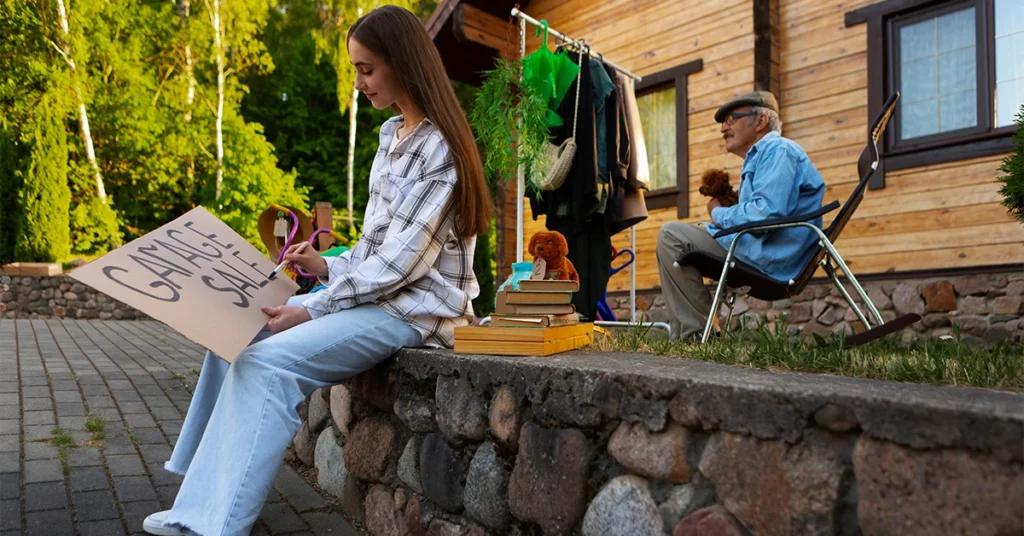Building a Retaining Wall Cost can transform your outdoor space — stabilizing slopes, preventing erosion, creating beautiful terraces or usable yard space. But before you break ground, one of the biggest questions you’ll face is: How much will it cost? It’s not a simple answer, because many factors influence the price. In this article, we’ll walk you through what drives Retaining Wall Cost, what to expect at every stage, and smart tips to budget wisely. By the end, you should feel confident planning or reviewing estimates with contractors.
ALSO READ: Divine Comedy: Discovering The Funniest Bible Verses
What Is A Retaining Wall Cost And Why It’s Important
A Retaining Wall Cost is a structure designed to hold back soil. You often see them where land has a slope, creating a level “step” in the yard. Their functions include:
- Preventing soil erosion
- Managing water runoff and drainage
- Creating flat terraces or usable planting zones
- Supporting driveways, roadways, or foundations
- Enhancing aesthetic appeal of your garden
Because they resist the lateral pressure of soil, Retaining Wall Cost must be built to last with proper drainage, reinforcement, and design. A poor job can lead to wall failure, costly repairs, or even property damage — which is why cost planning matters.
Key Factors That Influence Retaining Wall Cost
Before estimating, keep in mind these major cost influencers:
Height and Length
Unsurprisingly, the taller and longer the wall, the more materials, labor, and engineering is required. A short 2‑3 foot garden wall costs much less per foot than a 6‑ to 10‑foot structural wall. Many sources report Retaining Wall Cost ranging from $40 to $300 per linear foot for walls 2–6 ft tall.
Material Type
The choice of materials is one of the most significant cost drivers:
- Concrete (poured or block) — strong, durable, common choice
- Natural stone — often more expensive per square foot but very attractive
- Wood or timber — cheaper initially, but may have shorter lifespan
- Gabion (wire cages filled with rock) — useful for some slopes
- Steel, I‑beam, or sheet piling — used in demanding locations (e.g. near water)
- Brick or veneer finishes — add decorative cost
Typical ranges: concrete or block walls may cost between $15 and $50+ per square foot installed, depending on complexity.
Site Conditions & Soil Type
If your land is steep, rocky, or the soil is poor (clay, shifting soils), excavation becomes harder and risk rises. You may need specialized foundations or retaining methods. Working in tight spaces or uneven terrain raises labor difficulty and time.
Drainage & Waterproofing
A wall must manage water behind it — otherwise, hydrostatic pressure can push it outward. Drainage pipes, gravel backfill, weep holes, geotextile membranes, and waterproofing membranes all cost extra. Typical additional cost: $2 to $10 per square foot for waterproofing.
Reinforcement & Engineering
For taller or load-bearing walls, you’ll need reinforcement like rebar, geogrid soil reinforcement, stronger foundations, or tie-backs. You may also require an engineer’s design, permit fees, and inspections. These “soft costs” add up.
Labor, Access & Contractor Overhead
Labor rates depend on region, crew experience, local supply costs, and overhead. Also consider how easy it is to access the wall site — if the crew must haul materials by hand or navigate tight yards, time rises.
Demolition, Site Prep & Backfill
If you’re replacing an old wall, demolition and debris removal come into play. Plus, you might need to level the ground, clear vegetation, or bring in fill soil. These tasks add cost.
How Much Should You Expect To Pay? (Cost Ranges & Examples)
Here’s a breakdown of typical costs, using publicly available data:
| Wall Type / Scenario | Rough Estimated Cost* |
|---|---|
| 50 ft long, 2–6 ft tall Retaining Wall Cost | $4,000 to $10,000 |
| Per square foot cost | $20 to $50 (or more) |
| Linear foot cost (2–6 ft heights) | $40 to $300 |
| High-end decorative or structural wall | Well over $30–$60 per square foot, potentially $100+ for specialty materials |
| Demolition & replacement jobs | $30 to $70 per square foot (including removal and rebuild) |
These are ballpark ranges. Regional costs, materials, and complexity can shift your actual numbers.
To illustrate: a 60 ft wall, 4 ft high, using concrete blocks might cost in the mid‑range of $100 to $150 per linear foot (materials + labor). In tighter terrain or with premium stone, that could climb.
Also, one Reddit user shared a real quote:
Footing $50 a lineal foot minimum, wall $14 a square foot minimum.
That aligns roughly with standard ranges when factoring in subsurface and structural work.
Breaking Down The Cost Components
Let’s dig deeper into where your money usually goes:
Material Costs
Materials typically account for 30%–50% of the overall cost (depending on wall type). Here are example material cost estimates:
- Concrete blocks / masonry units
- Pouring concrete
- Stone veneer or natural stone
- Timber or treated wood
- Steel, sheet piling, I-beam
- Gravel and backfill materials
- Drain pipe, drainage rock, geotextile fabric
- Waterproofing membrane
Labor Costs
Labor includes excavation, formwork, masonry or building the wall, finishing, drainage installation, and cleanup. Depending on region and complexity, labor could be $10 to $30+ per square foot for typical residential walls.
Structural & Engineering Costs
For walls over certain heights (often over 3 or 4 ft, though regulations vary), an engineered design is needed. That may include geotechnical surveys, structural drawings, and inspection fees. Plan to allocate 5%–15% of your budget (or more) for these “soft costs.”
Excavation & Site Prep
This includes removing old wall (if applicable), clearing disturbances, grading, leveling, trenching for footer, and handling spoil (waste soil). Rocky or sloped terrain significantly increases this cost.
Drainage & Backfill
Proper drainage prevents wall failure. You’ll pay for:
- Drain pipes (typically perforated pipe)
- Gravel or crushed stone backfill
- Geotextile fabric or filter cloth
- Weep holes or drainage channels
Also backfill material to fill behind the wall, compaction, and soil leveling.
Finishes, Decorative & Extras
If you choose decorative stone facing, veneer, caps, lighting, built-in planters, steps, or fencing, those add cost. Also sealers, coatings, or stains.
Steps To Estimate & Plan Your Retaining Wall Cost Project
Here’s a suggested approach to get a realistic budget before you commit:
Measure and Sketch
Draw your wall’s path, measure approximate length and average height. Note slopes, curves, access, and any obstacles (trees, utilities, rocks).
Choose Materials & Finish Level
Decide your preferred material (e.g. poured concrete, block, natural stone) and any decorative features. This helps narrow down cost per unit.
Evaluate Site Conditions
Inspect or ask a contractor about soil type, drainage, rock presence, slope steepness, and access difficulty. If your site is challenging, plan a contingency buffer.
Get Multiple Contractor Quotes
Reach out to 2–3 reputable contractors and ask for itemized bids (materials breakdown, labor, permits, drainage, engineering). This helps you see where cost differences lie.
Ask About Permits & Regulations
In many places, walls above a certain height require permits, engineering, or inspections. Get that info early to avoid surprises.
Add Contingency
Always leave 10–20% extra in your budget for unexpected issues (e.g. rock, utility conflicts, change orders).
Decide Whether to DIY or Hire
If your wall is low (under ~3 ft) and simple, a DIY build might reduce costs. But taller, structural walls should almost always be handled by professionals.
Ways To Save Or Reduce Cost (Without Sacrificing Quality)
Here are tips to keep your cost down while still building a lasting wall:
- Keep height manageable — shorter walls are cheaper.
- Use modular interlocking block systems that reduce labor.
- Avoid overly decorative finishes if cost is a concern.
- Plan drainage carefully — adding a good drainage system early saves money versus retrofitting.
- Minimize demolition — reusing parts of old wall if structurally sound.
- Get bulk materials — ordering stone, gravel, block in bulk may reduce unit cost.
- Work with existing slope — use terracing or step the wall.
- DIY smaller sections — maybe you do site prep; let pros do technical parts.
- Request competitive bids — compare not only price but what’s included (warranty, materials, subgrades).
Common Mistakes That Can Blow Up Costs
- Ignoring drainage or waterproofing (leading to failure)
- Choosing premium materials without need
- Poor site evaluation — underestimating rock or soil issues
- Skipping engineering on higher walls
- Opaque or lump-sum contractor quotes (you don’t know what you’re paying for)
- Poor planning for access or material delivery
- No contingency for change orders or surprises
Sample Scenario: Cost Walk‑Through
Let’s imagine a mid‑size project:
- Wall length: 60 feet
- Average height: 4 feet
- Material: Concrete block with decorative cap
- Moderate site (gentle slope, accessible)
- Good drainage planned
Estimated breakdown might look like:
| Item | Cost Estimate |
|---|---|
| Materials (blocks, cap, mortar) | 30% of total |
| Excavation & site prep | 10–15% |
| Drainage & backfill | 10% |
| Labor (block laying, finishing) | 30–40% |
| Engineering, permits, contingency | 10–15% |
Given regional rates, the total might land somewhere between $120 to $180 per linear foot (just an illustrative number) for a total in the range of $7,000 to $10,800. This fits well within many published ranges for similar walls.
What To Ask When Reviewing Contractor Estimates
When you get bids, here are smart questions to compare and refine:
Can you provide a detailed breakdown (materials, labor, drainage, engineering)?
What assumptions are included (soil type, rock removal, compaction)?
Does the quote include permits, inspections, and engineering stamps?
Who is responsible for drainage, waterproofing, and backfill compaction?
What warranties or guarantees are offered (materials, workmanship)?
What is the project timeline, and how will delays or change orders be handled?
Do you include cleanup, disposal of old materials, and site restoration?
Having these answers will help you compare apples to apples, rather than just “cheapest number wins.”
When Is A Retaining Wall Cost Worth It?
Sometimes the Retaining Wall Cost seems steep, so it’s worth considering when a Retaining Wall Cost is a truly necessary investment:
- You have sloped land with erosion issues
- Water runoff is causing damage or pooling
- You want to create usable terraces or flat garden beds
- The slope is threatening foundations, driveways, or structures
- You’re landscaping and want a polished, functional look
If your slope is mild and safe, you might consider alternative soft landscaping (e.g. planting, terracing, grading) that is cheaper. But for medium-to-steep slopes, a properly built Retaining Wall Cost is often the best long-term choice.
Conclusion
There’s no one-size-fits-all answer to retaining wall cost — it depends heavily on height, length, materials, site conditions, drainage, and local labor rates. What you can do is plan carefully: sketch your project, understand site conditions, get multiple detailed quotes, and leave room for surprises. With good preparation, you’ll avoid nasty surprises and ensure your wall stands strong for years. Use the ranges here as a guideline, but always verify with local contractors or engineers in your region.
FAQs
What is a Retaining Wall Cost and what does it cost?
A Retaining Wall Cost is a structure that holds back soil on sloped land to prevent erosion or create level usable space. Its Retaining Wall Cost depends on many factors (height, material, site, drainage), but typical residential walls cost between $20–$50 per square foot or $40–$300 per linear foot for 2–6 ft tall walls.
How much does drainage and waterproofing add to the cost?
Drainage, weep holes, gravel backfill, and waterproof membranes can add $2 to $10 per square foot (or more, depending on the complexity).
Do I always need an engineer for a Retaining Wall Cost?
Not always. For small, low garden walls (often under ~3 ft), you might manage without an engineer. But for walls above certain heights (varies by jurisdiction), walls supporting loads, or complex soil conditions, engineering design and permits are often required.
Can I save money by doing a portion of the work myself?
Yes potentially. For instance, you might handle site clearing, basic excavation, or backfill. But the structural portions (foundation, drainage, wall assembly) are best left to professionals for safety and durability.
How long should a properly built Retaining Wall Cost last?
With correct design, materials, drainage, and maintenance, a Retaining Wall Cost can last decades — often 30+ to 50+ years, depending on materials, environment, and care.
ALSO READ: Why Every Home Baker Needs A Sourdough Bread Maker



